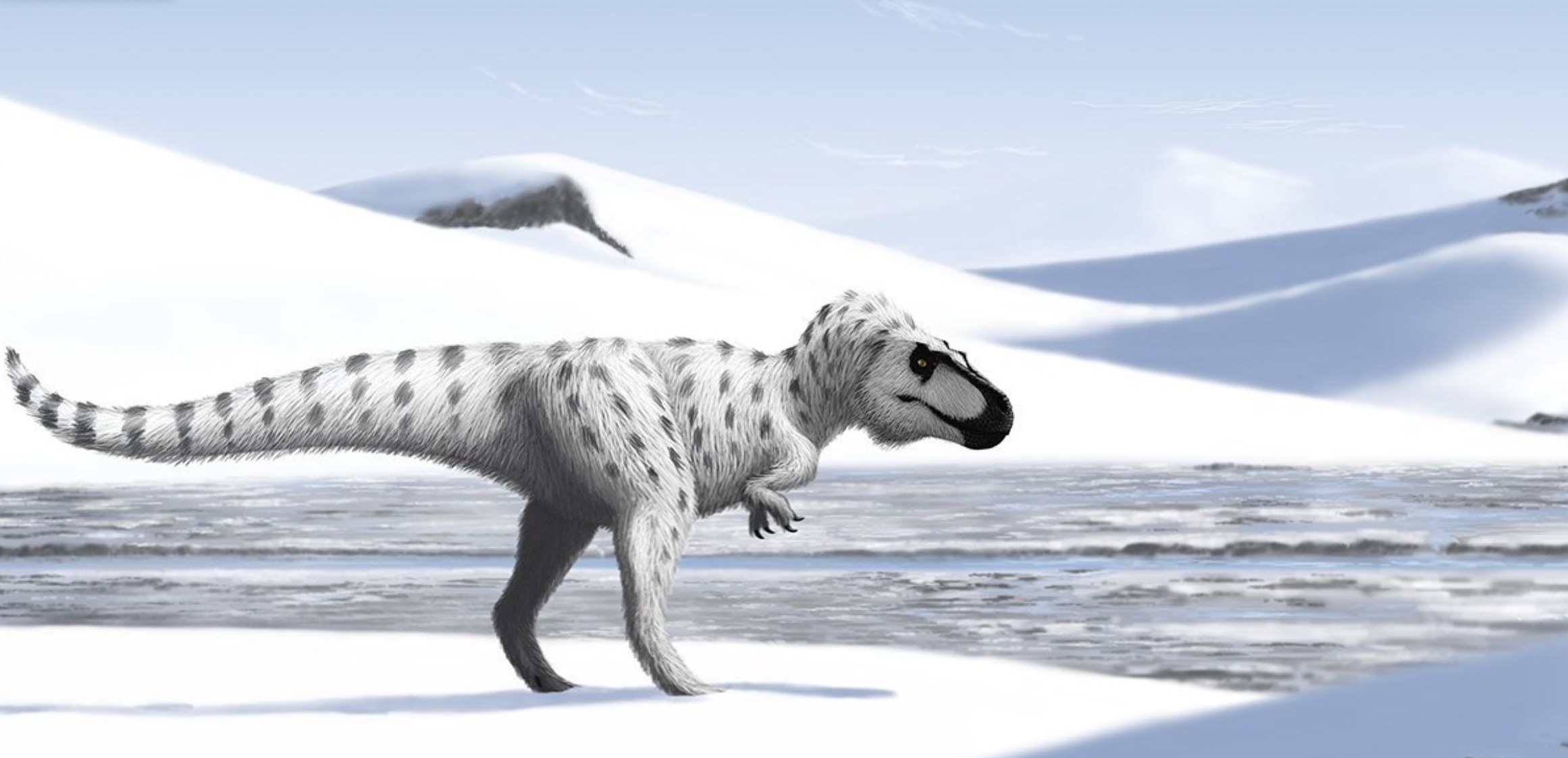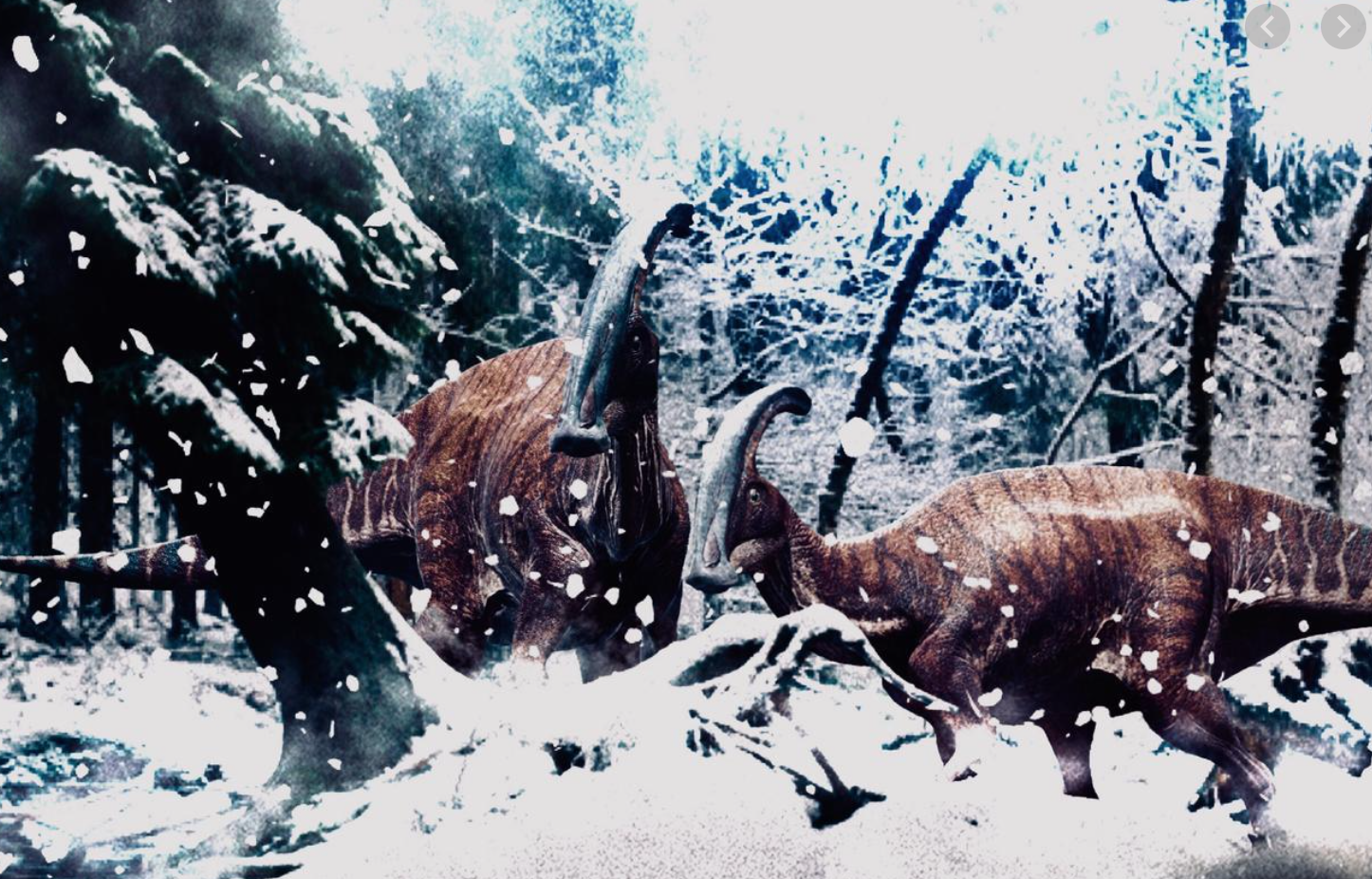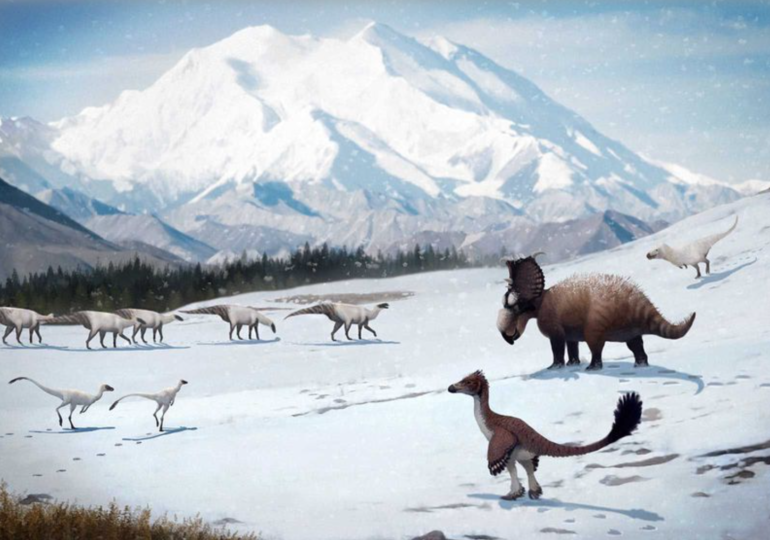It shouldn’t come as a surprise to us that dinosaurs existed during all four seasons and inhabited most of the walkable planet… So how come our ideas of prehistoric times exclude all imagery of snow flurries falling delicately onto the backs of spiky, feathery, leathery creatures?
While previous research suggested that dinosaurs migrated to avoid long winter nights and frigid environments, recent finds are pointing paleontologists in a new direction entirely. There is new evidence that some dinosaur species stayed in these habitats year-round and actually thrived there.
Paleontologists are now discovering new species at an accelerated speed, unearthing the bones and fossils of dinosaurs that existed exclusively in polar regions.
Rearranging the puzzle

Polar regions are not all where they used to be.
You remember Pangea, right? That large continent made up of all our existing continents today?
The shifting of Earth’s plates over the millions of years since dinosaurs roamed the planet has dramatically changed the terrains, climates, and entire habitat structures of the places that we know today.
By reimagining the what and the where of eons passed, paleontologists are now finding the who and the how of these polar regions: the dinosaurs able to withstand the harsh obstacles posed by prehistoric winter.
The dinosaurs that did it all
In order to combat the challenges posed by harsh Cretaceous winters, the dinosaurs living in polar areas evolved special characteristics.

Paleontological evidence shows that many of these dinosaurs had a unique growth cycle, evidently slowing their growth during colder months so that they required less food and energy.
Dinosaurs like this were a perfect biological match for Alaskan habitats. In this considerably warmer era, the ground didn’t freeze in winter, providing enough nutrients for herbivorous dinosaurs to get by. In the summer, these dinosaurs took advantage of lush forests as an opportunity to grow and save up for the colder months.
The Nanuqsaurus is a perfect example of this phenomenon. Its close relative, the Pachyrhinosaurus, resembles the Nanuqsaurus in almost every way, but is significantly larger, and lives in much warmer regions. Paleontologists now believe that the Nanuqsaurus evolved from the Pachyrhinosaurus, adapting to its Alaskan environment by becoming smaller over time to get by on less food.

In arctic Australia, small species like the Leaellynasaura were able to burrow during the cold months, feeding on low-to-the-ground plants, like ferns.
Larger dinosaurs, such as the famous Brontosaurus, would never have been able to withstand such winters, requiring tall blossoming greens for year-long snacking.

While rare in most other regions of the planet, the Troodon, a feathery 8-foot dinosaur, was abundant in polar regions. Its large eyes provided superhero vision during the long dark winter months, giving the Troodon an advantage over competing species.
What does this tell us?

That dinosaurs roamed lands previously thought to be uninhabitable shouldn’t surprise us. It’s not only a testament to dinosaurs’ ability to adapt beautifully to almost any prehistoric environment, but also to the relatively little knowledge we have collected thus far about dinosaurs.
Only within the last decade did we discover that many dinosaur species probably had feathers, completely revising the image we had in our heads.
Humans first discovered dinosaurs just 178 years ago. That wasn’t that long ago, considering the fact that dinosaurs lived for more than 165 million years. (To put it into perspective, humans have existed for around 200,000 years.)
We still have a lot to discover about dinosaurs – this is only the beginning.


